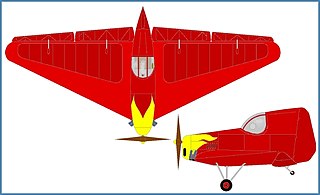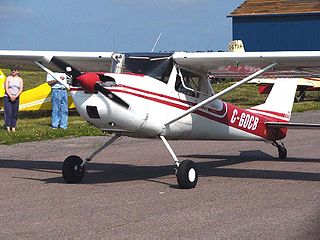The Yakovlev Yak-5 was an experimental trainer aircraft designed by Yakovlev OKB in the Soviet Union, and first flown in 1944.
The Nikitin NV-5, was a tandem-seat trainer aircraft designed and produced in the USSR from 1934.
The DB-LK was a bomber aircraft designed and built in the USSR in 1939.

The Tairov Ta-3 was a twin-engined single-seat escort fighter designed and produced in the Ukrainian SSR in the Soviet Union from 1939.

The BICh-20 Pionyer was a tail-less research aircraft designed and built in the USSR from 1937.
The Latécoère 570 was a twin-engined medium bomber designed to a 1934 specification. It did not fly until 1939, by which time competitor aircraft had gone into service.

The Polikarpov NB was a Soviet twin-engined bomber designed during World War II. Only a single prototype had been built before the program was terminated upon the death of Nikolai Nikolaevich Polikarpov, the head of the aircraft's design bureau, in 1944.

The Tupolev I-14 was a Soviet fighter aircraft of the 1930s. It was a single-engined, single-seat monoplane with retractable undercarriage, designed to carry heavy armament, and as such was one of the most advanced fighters of its time. It was ordered into production, but this was cancelled after only a small number had been built, the competing Polikarpov I-16 being preferred.
The Yakovlev AIR-6 was a Soviet light utility aircraft of the 1930s. It was a single-engined high-wing monoplane designed by Alexander Sergeyevich Yakovlev, with 128 being built.

The Gribovsky G-8 was a single seat sports and training aircraft designed and built in the USSR in the early 1930s.
The Gribovsky G-10 was a single seat sports aircraft designed and built in the USSR in the early 1930s.
The Gribovsky G-15 was a single engine, side-by-side two seat touring aircraft built in USSR in the 1930s. Only one was completed.
The Gribovsky G-21 was a single engine cabin monoplane designed and built in the USSR in the mid-1930s. Intended for touring and civil utility rôles, only one was completed.
The Gribovsky G-22 was a low powered, single seat sports cantilever monoplane, designed and built in the USSR in the mid-1930s. It set at least one class record and flew from 1936 to at least 1940, though only one was completed.
The Gribovsky G-25 was a Russian tandem seat biplane basic trainer built in the late 1930s. It was hoped to minimize unit costs by using a modified automobile engine but the G-25 did not reach production.
The Gribovsky G-26 was a single seat sports aircraft designed for high performance in the USSR in the later 1930s. Only one was built.
The Gribovsky G-27 was a light, economical, twin engined, multi-role aircraft built in the USSR in 1938-9. It did not reach production.
The Gribovsky G-28 was an advanced trainer for trainee fighter pilots, built in the USSR just before the German invasion in 1941. It satisfied VVS testing but changing priorities led to the abandonment of production plans.
The Gribovsky G-5 was a small, low powered Russian single seat sports aircraft from the late 1920s.

The Rubik R-03 Szittya I was a Hungarian single-seat sailplane flown in the late 1930s. The design was developed through three improving variants. though only one of each was built.














